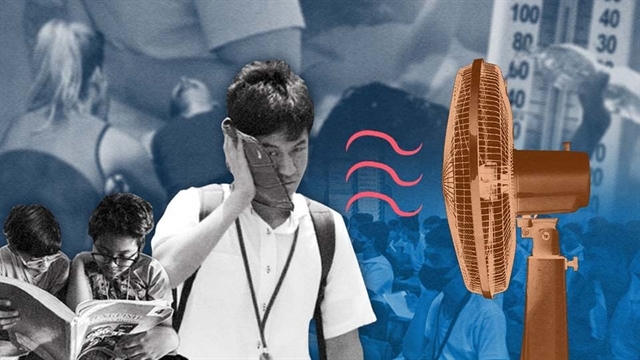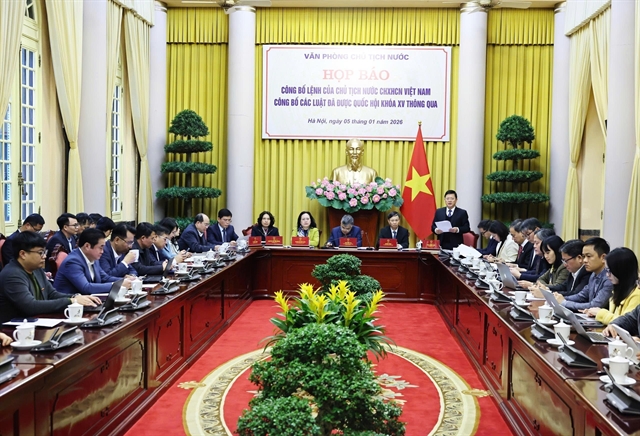 Life & Style
Life & Style


|
| Extreme temperatures have prompted the Department of Education to reiterate its Department Order No. 037, saying that in light of severe heat, school officials have the discretion to suspend in-person classes and shift to alternative modes. Philippine Daily Inquirer Photo |
MANILA – “Mainit po talaga (It’s really hot).”
This was how teachers described the intensity of heat they have experienced in recent days, especially with the heat index, or the level of discomfort a person experiences because of the combined effects of temperature and air humidity, reaching extremely high levels.
According to data from the Philippine Atmospheric, Geophysical and Astronomical Services Administration (Pagasa), the heat index hit 46ºC in Daet, Camarines Norte on Sunday, Feb. 7. The day before, the highest level was recorded in Puerto Princesa City, Palawan, with the heat index reaching 44ºC.
This prompted the Department of Education (DepEd) to reiterate its Department Order No. 037, which was released in 2022, saying that in light of severe heat, school officials have the discretion to suspend in-person classes and shift to alternative modes.
As teachers told INQUIRER.net, even with four, or even more electric fans, the heat is really intolerable and is already affecting learning, especially in classrooms where 30 to 40 students are cramped.
“I have a class of 16, and even if we already have four electric fans inside our classroom, they are still complaining about the extreme heat, so imagine the struggle in a classroom with 30 or more students,” said Mae (not her real name), a teacher in Nueva Ecija, where the heat index was also high.
Pasig City Rep. Roman Romulo pointed out on Wednesday, April 3, that classrooms in the Philippines are not weather-resistant, saying in Filipino that “the classrooms cannot handle the heat because they were not designed as heat-resistant.”
All over the Philippines, classroom construction is being implemented by the DepEd and the Department of Public Works and Highways, with private institutions executing the contract with the government.
‘Not ideal for PH’
As stressed by Gerard Lico, an architect, most of the current classrooms that were built based on the “standard design” set by the DepEd and DPWH are not ideal for a tropical country, like the Philippines, where the climate is “hot to warm and moist all year.”
“Now, classrooms are already made of concrete, with ceilings that are really low,” he told INQUIRER.net in Filipino, stressing that with a low ceiling and a lack of large windows, cross ventilation is next to impossible.
Unlike wood, concrete absorbs and retains heat, so as Lico said, “when walls are built, there should be insulation in between, but because hollow blocks are not that expensive, it is the only material being mostly used now.” This, however, is a “failure” when it comes to energy efficiency and comfort.
“Concrete is really hot, especially in a tropical climate,” he said.
Based on the report “How concrete, asphalt and urban heat increase misery of heat waves” that was published by Reuters last year, “construction materials like asphalt or concrete are capable of absorbing as much as 95 percent of the sun’s energy, which is then radiated back into the surrounding atmosphere.”
Lico pointed out the need for “equal inlet and outlet of air because if there is none, even if one side of the classroom has an immense window opening, if there is no outlet, the window would be useless,” he said. “Cross ventilation won’t happen.”
He said that in a tropical climate, like what the Philippines has, windows, in some cases, are not enough: “That’s why in old classrooms, like the ones at the Palma Hall of the University of the Philippines Diliman, there is a ‘calado’ between the wall and ceiling.”
Dangerous heat
As Rep. France Castro (ACT Teachers) said, the rising heat index “should serve as a wake-up call to prioritize the construction of additional classrooms and the improvement of ventilation systems in our schools.”
Based on data from Pagasa, a heat index of 52°C and beyond is already considered extremely dangerous, which means that “heat stroke is imminent.”
It said symptoms of heat-related illnesses include heavy sweating, exhaustion, dizziness, blackout, weak but fast pulse, feeling of nausea, and vomiting, mostly as a result of prolonged exposure to heat, exhausting activities in warm weather, weak immune system, high humidity, obesity, chronic alcoholism, and even age (for the elderly and infants).
As Castro said in a statement on Tuesday, April 2, it is not fair for learners and teachers to suffer in “unbearable conditions that directly affect their health, wellbeing, and academic performance.”
“We cannot delay the provision of adequate infrastructure any longer. It is the responsibility of the government, particularly the DepEd, to prioritize the well-being and learning conditions of our students and teachers,” Castro said.
“Investing in the construction of more classrooms and improving ventilation systems is an investment in the future of our nation,” she stressed.
Based on a survey conducted by the Alliance of Concerned Teachers, 77 percent of instructors in Metro Manila said they cannot bear the heat experienced in schools. Only 22.8 percent said that the heat they feel is moderate.
Looking back
It was pointed out by Lico that “right now, the construction of our classrooms has to be sustainable,” saying that “we should rethink the design of our classrooms by reflecting on what was studied by William Parsons when he designed the Gabaldon Schoolhouses.”
Parsons was the supervising architect for the construction of Gabaldons, which originated from Act. No. 1801, a legislation written by Isauro Gabaldon of the Philippine Assembly in 1907.
As the DepEd said, Parsons integrated elements from the bahay kubo and bahay na bato that are good for a tropical climate.
Ken Enriquez, an architect, said in a column that the Gabaldons are “tropical architecture principles built as structure,” with the characteristics of the bahay kubo and bahay na bato evident in the 7×9-meter classrooms that Parsons designed.
“Similar to the two prominent Filipino houses, the Gabaldons are elevated at 1.2 meters from the ground supported with either wooden or concrete posts. This was done not only to isolate the living space from the thermal heat of the ground, but also to avoid flooding in the interiors,” he said.
Gabaldons usually have a wooden floor, with small gaps in between the wood planks to allow better air circulation for the interiors. The roof is made of lightweight nipa or galvanized iron with deep overhangs for sun shade and rain protection.
“Large swing-out capiz shell inlay windows run along the stretch of the single-loaded open corridor. Ventanillas or transom windows were then used to ensure that cross ventilation is achieved and natural lighting reaches the inside,” he said.
To date, there are 2,045 Gabaldon Schoolhouses that still exist and are treated as important structures, the DepEd said. Back in 2019, then-President Rodrigo Duterte signed Republic Act No. 11194, or the Gabaldon School Buildings Conservation Act.
‘Not that expensive’
As pointed out by Lico, “we just have to learn what was practiced before in the vernacular tradition,” stressing that “even the use of traditional materials, like wood, can mitigate the heat that we are experiencing within an enclosed environment.”
“Resilience can be learned by recovering the traditional knowledge that we have kasi it has existed for centuries. There are really ways to redesign our classrooms, but we should reflect on the traditional building methods that we have learned,” he said.
He said, too, that the orientation of buildings, especially schools, should be east-west, so that there would be no direct sun exposure.
Especially when glasses are used for windows, which is the case now, he said the heat would really be intense when these are exposed directly to the sun. “The orientation of buildings is that the longest side should be in the east-west,” Lico said. Philippine Daily Inquirer/ANN




